On the Road to Creating Personalized Anti-Cancer Vaccines

When First Lady Jill Biden visited Emory University in September 2023, it was to talk about the university’s key role in a federal push to unlock the potential of mRNA in the field of cancer treatment. “It’s incredible to see how the pieces of this project come together,” she told an assembled group.
The dream scenario is having the ability to sequence a patient’s tumor, identify mutations that are evading a body’s immune response and rapidly build custom vaccines. It’s theoretically possible—even easy—but the science is still under development.
Messenger RNA (mRNA)—the molecules used in most COVID vaccines—tells DNA how to make specific proteins that push the immune system to create antibodies targeting the proteins, peptides, polysaccharides, lipids or nucleic acids that can trigger an immune response.
Biden had just come from touring the lab of Philip Santangelo, PhD, a member of Winship’s Cancer Immunology Research Program and professor in the Wallace H. Coulter Department of Biomedical Engineering at Georgia Tech School of Engineering and Emory University School of Medicine.
Santangelo’s team is now more than a year into work they hope will ultimately pave the way for personalized cancer vaccines that can help patients’ immune systems attack tumors. That work broadly involves using synthetic mRNA to spur the creation of specific immune-system antibodies so the body itself can help identify and eradicate cancer. The Santangelo lab is expert in creating synthetic mRNA.

Philip Santangelo, PhD
Santangelo is the principal investigator whose team, based at Emory, Yale and the University of Georgia, received the first grant—$24.8 million—from the federal government’s recently created Advanced Research Projects Agency for Health (ARPA-H). Its name evoking the Advanced Research Project Agency (ARPA) created in 1958 to fund America’s space race—the original moonshot—ARPA-H was created to support innovative research projects aimed at fueling the Biden administration’s relaunched “cancer moonshot” and changing cancer as we know it.
“They’re finding ways to train our immune systems to fight cancer and other diseases,” the first lady said of the lab’s research. Then, mentioning her stepson Beau Biden, lost to brain cancer in 2015, she addressed lab members directly: “Your work can change lives.”
Creating mRNA vaccines
In mRNA-based COVID vaccines, the mRNA instructs the body to make the protein that the coronavirus uses to infiltrate cells, causing it to build up a supply of antibodies ready to defend against it. It’s a delicate vaccine to ship and store because mRNA easily falls apart under less-than-ideal circumstances.
In cancer treatment, mRNA works a little differently. While viruses and other antigens are invaders from outside the body, cancer cells are bodily mutations gone wild. Every cancer in every person is unique. This means, theoretically, that every mRNA-based cancer vaccine would have individualized instructions and packaging directly targeting each recipient’s tumor biology.
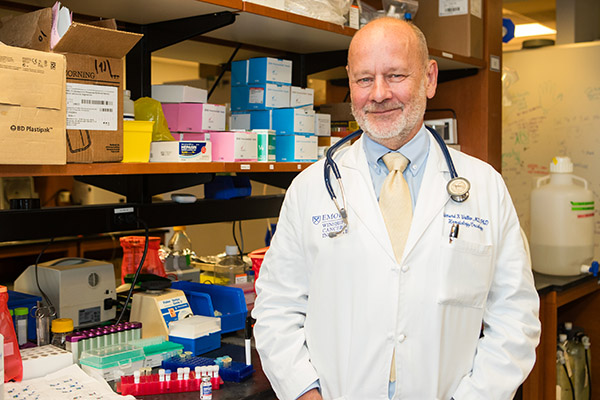
Edmund K. “Ned” Waller, MD, PhD
“Cancer RNA vaccines are trying to induce the immune system to become activated and expand in response to proteins that are abnormally expressed or mutated in specific cancers,” says Edmund K. “Ned” Waller, MD, PhD, FACP, the Rein Saral, MD, Professor in Cancer Medicine at Winship. Waller is the director of the Bone Marrow and Stem Cell Transplant Program and also holds appointments at Emory University School of Medicine and as director of the Center for Regenerative Engineering and Medicine at Emory, Georgia Tech and the University of Georgia.
The dream scenario is having the ability to sequence a patient’s tumor, identify mutations that are evading a body’s immune response and rapidly build custom vaccines. It’s theoretically doable—even easy—but the science is still under development.

Suresh S. Ramalingam, MD
“Leveraging the human immune system to treat cancer has become the standard of care for many cancers,” says Winship’s Executive Director Suresh S. Ramalingam, MD, FACP, FASCO, the Roberto C. Goizueta Distinguished Chair for Cancer Research at Emory University School of Medicine. “However, the benefits of present immunotherapies are limited to a relatively small subset of patients.” His own research looks at personalized medicine approaches to treating metastatic cancers.
Ramalingam is optimistic about Santangelo’s research. “The recent ARPA-H award to the Santangelo lab will help develop novel mRNA vaccines to treat cancer,” he says.
Making the dream come true
For the dream to become a reality, there are many steps from bench to clinical trials to FDA approval—not least because the agency would need to approve a drug that, theoretically, looks different every time it’s deployed.
Santangelo and colleagues are currently combing through countless combinations of tumor types and mRNA in animal models to move forward in clinical trials with a few that have the most potential to help the most people. For some cancers, for example, scientists already know which proteins mRNA needs to make to trigger the correct immune response in a large number of cases. Top candidates under consideration include head and neck cancer, melanoma, colon cancer and lung cancer. “We’re going to start with something less personalized so that we can get ourselves in the door and everyone’s comfortable with the approach,” Santangelo says.
The Emory team is collaborating with a group at Yale specializing in dendritic cells, which build the proteins based on mRNA instructions, and the lab is working to build partnerships with Winship clinicians to test drugs in the lab using patient blood draws. “The goal of my work is not to cure mice of cancer,” Santangelo says, referring to research that precedes clinical trials in humans. “The goal is to get this into people and to improve people’s lives. I want one thing that solves one problem by the time I retire.”
World-class vaccine research done here
While Santangelo’s lab has been in the spotlight for its mRNA cancer vaccine research, it’s not the only group at Winship studying immunotherapeutic—“precision medicine”—approaches to treating cancers. Researchers across the institute recognize that one-upping cancerous cells’ skill at evading immune response has the potential to increase remission rates without the potentially harsh side effects in current standard-of-care treatments like surgery and chemotherapy.
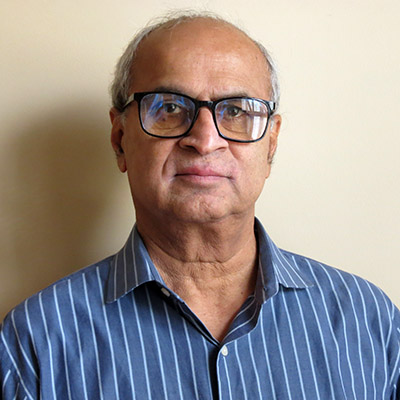
Periasamy Selvaraj, PhD
Waller, for example, works on expanding the efficacy of small-molecule drug immunotherapy via immune cell infusions. “Modulating the immune system to activate it in response to tumor-associated antigens has induced durable remissions,” Waller says. “The fraction of patients with solid tumors who benefit from those approaches still is only one in three or less, so more work needs to be done to make cancer immunotherapy a curative option for more patients.” He adds, “There is a moral responsibility for oncologists to help advance that agenda.”
Waller and colleagues, including Periasamy Selvaraj, PhD, professor in the Department of Pathology and Laboratory Medicine at Emory University School of Medicine and a member of the Cancer Immunology Research Program at Winship, in a 2023 paper in Frontiers in Immunology, reviewed recent innovations in the area. They concluded that new techniques and drug combinations will increase effectiveness. Selvaraj’s own work focuses on personalized immunotherapy cancer vaccines that stimulate immune responses by using tumor membrane vesicles (TMVs) derived from a patient’s tumor tissue rather than mRNA.
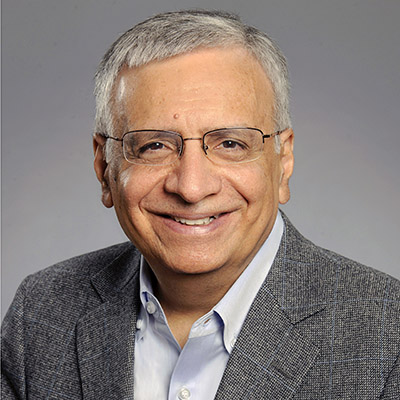
Rafi Ahmed, PhD
Other labs are doing research that augments the Santangelo lab’s efforts. For example, Rafi Ahmed, PhD, co-leader of Winship’s Cancer Immunology Research Program and professor in the Department of Microbiology and Immunology at Emory University School of Medicine, is focused on optimizing the mRNA platform being used in vaccine discovery. “Our lab has a lot of expertise in defining the properties of T-cells that exist during chronic infection and cancer,” Ahmed says of these immune cells manufactured in bone marrow. “We know which T cell to target and which will respond to the therapeutic vaccination,” allowing the team to design optimally effective mRNA, he says.
As director of the Emory Vaccine Center—the largest, most comprehensive vaccine research center in the world—Ahmed oversees work that includes a core focus on immune system-focused cancer vaccine development. In fact, he has been innovating in the space for decades. He was senior author of a 2008 paper in The Journal of Experimental Medicine demonstrating that it’s possible to augment therapeutic vaccines—aimed at treatment rather than prevention, like annual flu or COVID shots—with an immune cell exhaustion brake that keeps cells fighting for longer. “We were among the first,” Ahmed says, “to show in a preclinical model that, in the setting of a chronic infection that mimics the same features you get in cancer, combination therapy with PD-1 (programmed cell death) and a therapeutic vaccine will result in increased T-cell responses and a better reduction.”
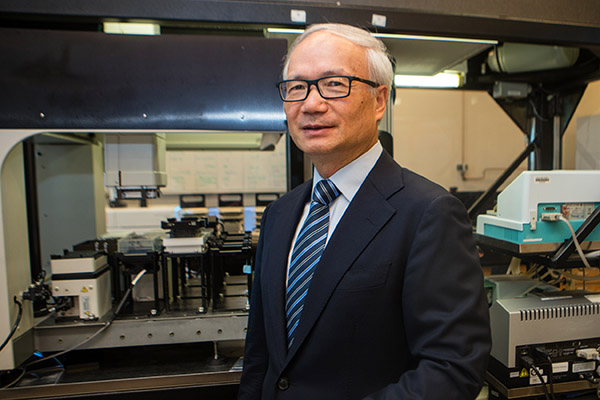
Haian Fu, PhD
Emory hopes to eventually capitalize on much of this immunotherapeutic research by creating an in-house pathway from lab to approved product. Earlier this year, the university created a Center for New Medicines, helmed by two leading Winship researchers: Haian Fu, PhD, who co-leads Winship’s Discovery and Developmental Therapeutics Research Program and is professor and chair of the Department of Pharmacology and Chemical Biology at Emory University School of Medicine; and Dennis Liotta, PhD, a member of Winship’s Discovery and Developmental Therapeutics Research Program, Samuel Candler Dobbs Professor in Emory University’s Department of Chemistry, chair of the advisory committee for Drug Innovation Ventures at Emory and one of the premier discoverers of novel therapeutics in the United States.
Though the Center for New Medicines’ initial focus is on more traditional small-molecule drug development, there are plans to incorporate mRNA vaccines. “There was a need to provide some infrastructure to facilitate the development of new drugs,” Liotta explains. “When you go from discovery to development, that means you’re starting to think about what the FDA is going to want in order to get the compound into the clinic and eventually to be approved.” Though related work has been happening at Drug Innovation Ventures at Emory, that entity has not done any vaccine-related work.
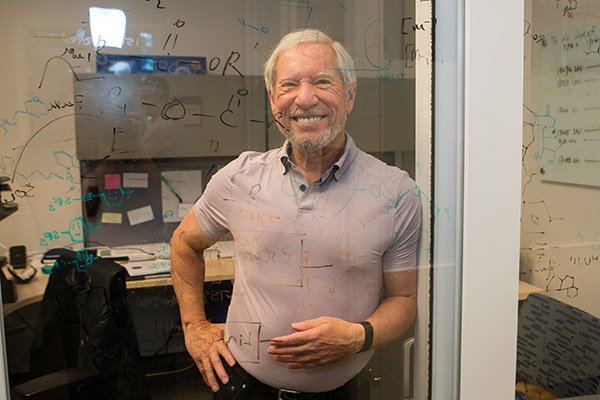
Dennis Liotta, PhD
Building up this sort of pipeline means acquiring a host of expertise outside of focused lab research, like knowledge of the business side of drug development and a close familiarity with the FDA approval process. But the potential payback is huge for the university—and for patients with aggressive, intractable cancers, hoping for miracle cures.
“Emory is one of very few academic centers that can develop life-changing drugs with global impact,” Fu says. “Targeting cancer with an mRNA vaccine is not just a dream anymore.”




